New Customs Requirements for Diamond Imports: What We Know
Beginning in April, companies importing diamonds into the United States will have to list the country in which the diamonds were mined.

Instead of just certifying that their diamonds did not come from Russia, importers will be asked to list the country in which they were mined.
The new requirement is part of the broader efforts the United States and other G-7 nations collectively began taking last spring to prevent Russian diamonds from crossing their borders.
Since March 1, 2024, companies or individuals importing loose polished natural diamonds weighing 1 carat or more into the U.S. have had to self-certify that the diamonds were not mined or manufactured in Russia.
The rules expanded to include finished jewelry and diamonds weighing 0.5 carats and above on Sept. 1.
What this requires of importers is filing a PDF on official company letterhead with the following statement, “I certify that the non-industrial diamonds in this shipment were not mined, extracted, produced, or manufactured wholly or in part in the Russian Federation, notwithstanding whether such diamonds have been substantially transformed into other products outside of the Russian Federation.”
Beginning in April, there will be a new field for “country of mining” in the Automated Customs Environment (ACE) manifest that importers will have to fill out, said JVC President, CEO and General Counsel Sara Yood.
They also can upload documents to support their country-of-mining claims, though CBP is not requiring additional documentation at this time.
In a member alert circulated last week, JVC said that CBP has listed “purchase orders, certificates of mining and certificates of origin” as acceptable forms of proof of country of mining.
While CBP has not provided specifics, it is presumed this means documents such as a Kimberley Process certificate or a certificate from the G-7 verification “node” in Antwerp or the pending one in Botswana.
Yood said if such documentation is not filed at time of import, it can be presented later if a shipment is spot-checked, meaning that customs pulls it and asks for additional documentation.
JVC also noted that more than one country of mining can be declared on an entry, but each one will require a separate line and its own documentation for verification.
CBP’s January Trade User Information Notice on the new country-of-mining requirement took many in the industry by surprise, though the organization had indicated back in the fall that requiring certification of country of mining was a possibility.
In October, CBP put a notice in the Federal Register, the daily journal where the U.S. government posts proposed rules and public notices, asking for comment on these changes, but few in the industry saw it.
Yood said her organization was made aware of the notice and drafted a comment on the proposal that CBP, “seems to have ignored.”
What We Don’t Know
While CBP has clarified some points of its new country-of-mining requirement since posting the notice in January, there are still a few outstanding questions.
It is not explicitly stated what size of goods will have to meet the new requirement.
However, since the sanctions on Russian diamonds apply only to diamonds that are 0.5 carats or larger, it is assumed this same size range will apply for certifying country of mining.
It is not expected that diamond importers will have to certify country of mining for goods that are smaller than half a carat.
CBP also has said it will begin collecting this additional information in April 2025, but did not provide an exact date.
Yood said JVC is recommending importers prepare for April 1, just to be safe.
The agency also has not addressed the issue of so-called legacy (or “grandfathered”) diamonds, meaning stones that were exported from Russia before March 1, 2024, the day the G-7’s ban on Russian diamonds went into effect.
The Office of Foreign Asset Controls announced in August that it has issued two licenses, General License 103 and General License 104, allowing diamonds that were out of Russia before that date to be imported into the U.S.
Companies importing goods under these licenses also are asked to self-certify using specific language, but it is unclear at this time if they also will be asked to provide country of mining information.
On Feb. 28 from 1-2 p.m. Eastern, JVC is holding a members-only virtual compliance briefing where it will be discussing country-of-mining requirements, among other issues.
JVC members interested in attending can register on the organization’s website.
The Latest

Kadet, a 1994 National Jeweler Retailer Hall of Fame inductee, helped grow the family-owned retailer in the Chicago area and beyond.

Billed as the world’s smallest wearable, Lumia Health’s new smart earrings have a health tracker subtly embedded in the back.

Don’t let those with December birthdays feel blue. Help them celebrate their month with blue zircon, turquoise, and tanzanite.

How Jewelers of America’s 20 Under 40 are leading to ensure a brighter future for the jewelry industry.

The new pink sapphire version of the piece dances with its wearer in the brand’s “Icons After Dark” holiday campaign.


A choice that’s generated a lot of commentary, Pantone says “Cloud Dancer” marks a fresh start and encourages relaxation and creativity.

The manufacturer’s holiday campaign features a gift guide filled with trending designs and jewelry that can be personalized.

Roseco’s 704-page catalog showcases new lab-grown diamonds, findings, tools & more—available in print or interactive digital editions.

The man was charged with theft, accused of ingesting the necklace while in a jewelry store in Auckland, New Zealand.

The Florida independent expanded its store from 8,000 to 14,000 square feet, fulfilling the vision of its late co-founder, Jim Dunn.

Sponsored by De Beers Group
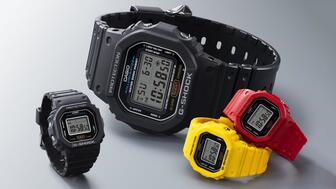
The classic 5600 series G-Shock has been scaled down to about a tenth of its size, becoming a fully functioning watch ring.

The association’s annual conference and gala will take place Feb. 4, 2026, during the Tucson gem shows.
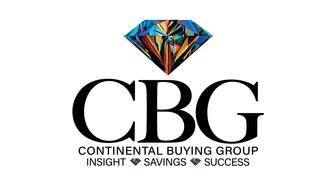
The January show will include a workshop for jewelry retailers on implementing AI to strengthen their businesses.

Fellow musician Maxx Morando proposed to the star with a chunky, cushion-cut diamond ring designed by Jacquie Aiche.
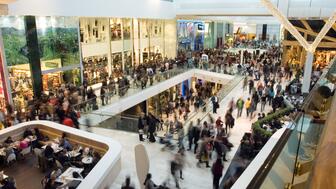
Black Friday is still the most popular shopping day over the five-day holiday weekend, as per the National Retail Federation’s survey.
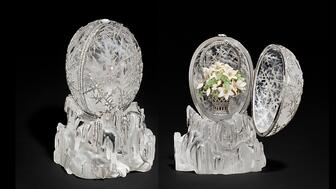
The historic egg, crafted for Russia's ruling family prior to the revolution, was the star of Christie’s recent auction of works by Fabergé.
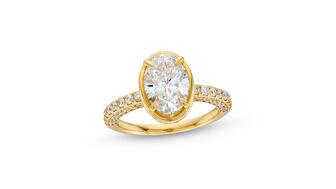
The retailer offered more fashion jewelry priced under $1,000, including lab-grown diamond and men’s jewelry.

The eau de parfum is held in a fluted glass bottle that mirrors the decor of the brand’s atelier, and its cap is a nod to its “Sloan” ring.

Vivek Gadodia and Juan Kemp, who’ve been serving as interim co-CEOs since February, will continue to lead the diamond mining company.

In addition, a slate of new officers and trustees were appointed to the board.
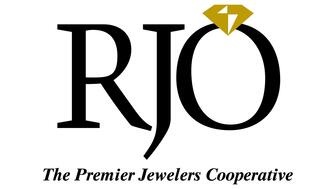
Witt’s Jewelry in Wayne, Nebraska, is the organization’s new milestone member.

Laurs is the editor-in-chief of Gem-A’s The Journal of Gemmology and an expert on the formation of colored gemstone deposits.
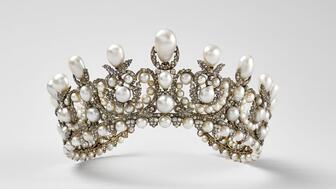
The man, who has a criminal history, is suspected of being the fourth member of the four-man crew that carried out the heist.
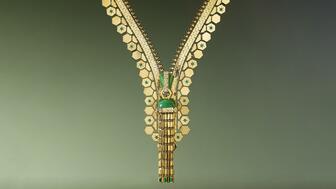
The single-owner collection includes one of the largest offerings of Verdura jewels ever to appear at auction, said Christie’s.

Michael Helfer has taken the reins, bringing together two historic Chicago jewelry names.
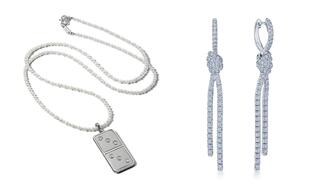
The guide features all-new platinum designs for the holiday season by brands like Harwell Godfrey, Ritani, and Suna.




























